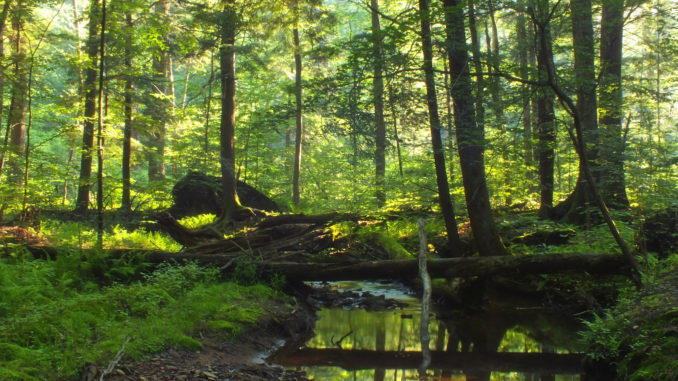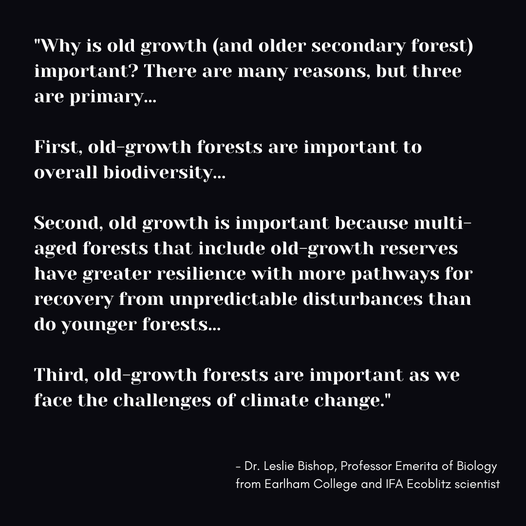
By Matt Peters
After several years of public comment and neighborhood meetings, the city of Pittsburgh in 2017 enacted a Climate Action Plan to establish a comprehensive strategy for climate change preparedness and mitigation. The chapter on forests begins with the straightforward imperative to “HALT the conversion of forest canopy to development.” Now, the neighborhood of Hazelwood is becoming a testing ground for Pittsburgh’s Climate Plan—with the proposal of a housing development project impacting the edge of a Greenway corridor that connects the core forest to nearby Schenley Park.
At their monthly board meeting on Sept. 9, 2021, the URA agreed to enter into a six-month Exclusive Negotiations agreement with Oak Moss Consulting Inc. to give their Woods Village housing proposal a closer look. The Woods Village proposal would build 62 prefabricated apartment rentals, more suited for students than for family housing, while clearing several city lots adjacent to the Greenway that have reforested themselves to a young stand of black locust and a few other primary-succession species. The URA did add a condition that Oak Moss examine their impact on the environment, but self-reporting is seldom thorough or even trustworthy when a profit motive is involved. The irony of the city touting its redevelopment of one of the largest brownfields in America as a model of green and sustainable urban revitalization, yet allowing the degradation of its urban forests to continue, has inspired a lively conversation among several city agencies including Forestry, Planning, and Hazelwood’s City Councilperson Corey O’Connor.
The examination of the particulars of the Woods Village proposal has revealed alarming vulnerabilities in Hazelwood’s Greenway system, as not all forest canopy is protected under this designation. Cutting down the forests threatened by the Woods Village proposal—and others like it soon to follow—would eradicate a key connecting corridor linking the Schenley Park “core area” to the central mass of Hazelwood’s Greenway forests. This connectivity is enough to support a robust array of wildlife that includes coyotes and foxes along with deer, turkey, hawks, owls, and songbirds such as wood thrush, vireo, tanager, and warbler. Severing this narrow connecting corridor will result in two smaller habitat fragments that will not add up to the sum of the connected whole because of how the dynamics of island ecology and forest fragmentation work.

The city of Pittsburgh is at a key transition point in its history, having emerged as a climate leader on the global stage under the eight years of Mayor Bill Peduto’s administration. Peduto lost his incumbency to State Representative Ed Gainey in the most recent primary elections and, presuming he wins the upcoming November election, Mr. Gainey seems poised to continue this progressive green trend in his administration. His strong interest in addressing inherently racist or otherwise discriminatory civic structures will mean less of a presence on the international stage than his predecessor, but his ability to listen to the needs of the grassroots in each neighborhood may mean forest advocates will find a forum to articulate the need for forest protection and expansion within the city. We can meet the need for affordable housing, neighborhood revitalization, transportation improvements—and address the other issues urban dwellers face—while preserving our urban forests for future generations.
Hazelwood is central to the discussion of forest conservation in the city not only by virtue of its place among the nation’s most high-profile brownfield redevelopments, but also fact that the neighborhood is home to fully one third of the city’s non-park forests. Discussion of “green spaces” and “green infrastructure” among city planners seems more sincere than the distortion of such terms by the industrial foresters who manage our public lands. Still, it would be a far stretch to say there is anything like an actual “re-wilding” ethic or sensibility at the government level. How we live in our cities affects every aspect of how we live with our forests, and bringing the forest habitat into our cities can help foster a closer connection with nature. In light of the Intergovernmental Panel on Climate Change report released earlier this year, and the growing understanding of how serious the consequences of global warming are going to be, the City of Pittsburgh must set aside canopy forest and meet their own management goals for climate preparedness. Forests are our best defense against the destructive impacts of industrial pollution and global warming.
To view Pittsburgh’s Greenways and Climate Action Plan, visit these websites:
https://pittsburghpa.gov/dcp/greenways
https://pittsburghpa.gov/dcp/climate-action-plan
To speak up for Pittsburgh’s forests and protect Hazelwood’s greenways, contact District 5 Councilman Corey O’Connor and the Urban Redevelopment Authority.
Councilman Corey O’Connor
412-255-8965
Urban Redevelopment Authority
412-255-6600
